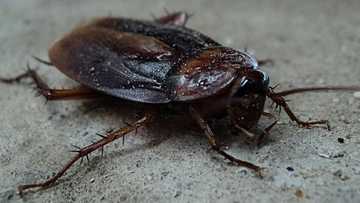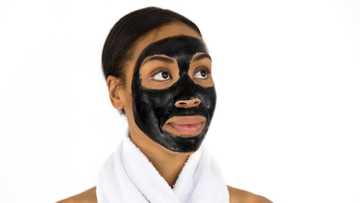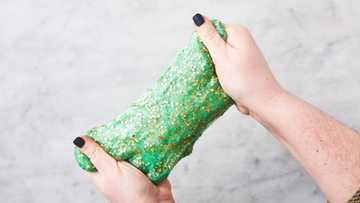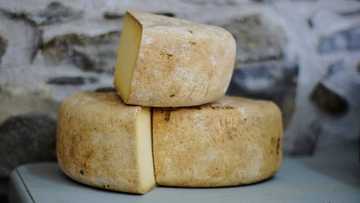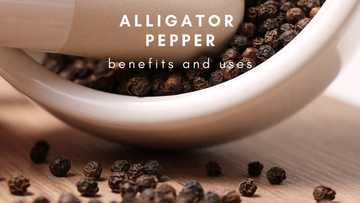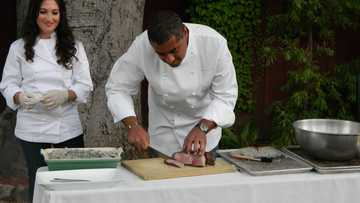What is imitation crab made out of and is it good for you?
It’s hard to take imitation crab seriously, especially since the word ‘imitation’ is part of its name. You may be opposed to anything faux, but that doesn’t mean that you have totally escaped imitation crab. Truth be told, fake crab meat is one of the major ingredients in many seafood salads, California sushi rolls, and more. So, inasmuch as you may want to deny it, high chances are that you have consumed this faux seafood before. But what is in imitation crab anyway?
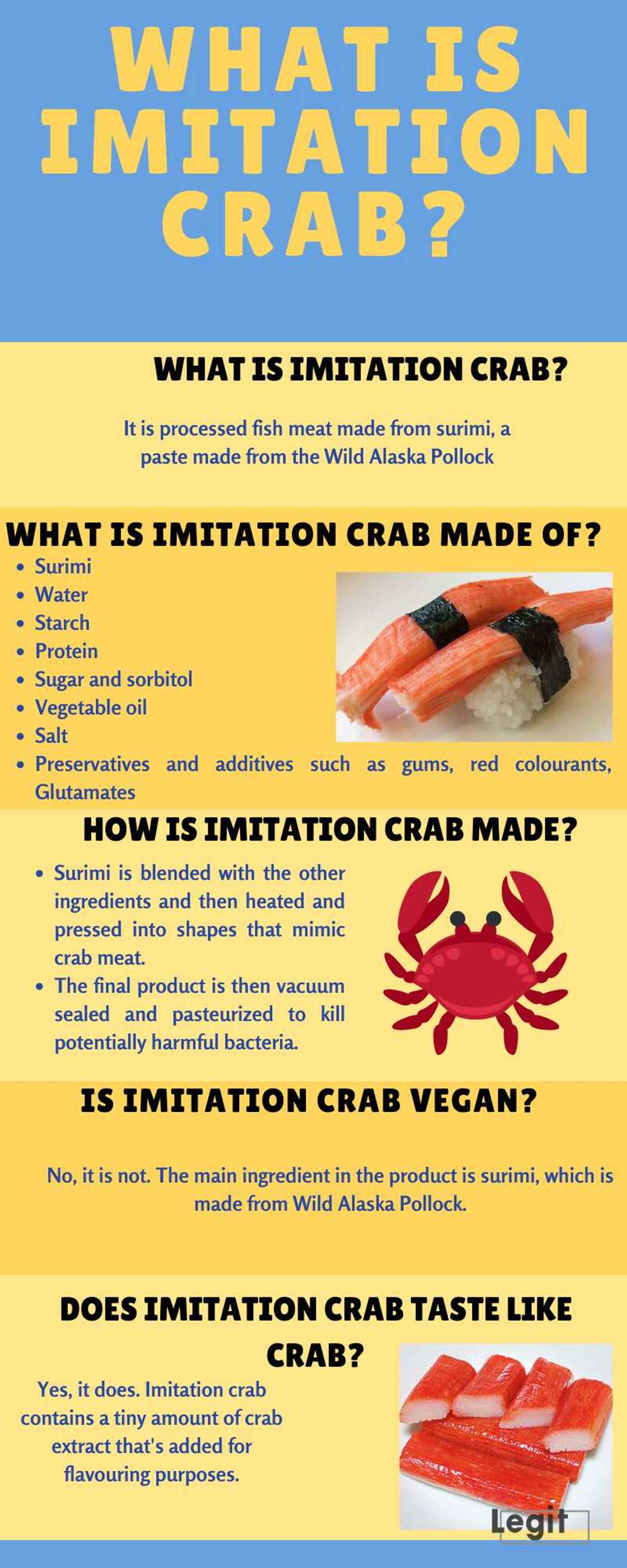
Source: Original
Don't worry; you're not the only one who has asked, "What is imitation crab made of?" As it has such a similar taste to the real deal, you may be confused. Here is all you need to know about artificial crab meat.
What is imitation crab?
It is processed fish meat that also goes by the name "the hot dog of the sea." It is made from seafood, and it generally contains no crab other than the tiny amount of crab extract that's added for flavouring purposes.
But what is imitation crab meat made of?
What is imitation crab made of?
Have you ever asked yourself, "What exactly is imitation crab meat made of?" Well, the main ingredient in the product is surimi, a paste made from the Wild Alaska Pollock, which gives the product its mild color and odor.
Pollock makes up 35 to 50% of the product in weight. Pollock is also used to make fish sticks and other breaded fish products.
Apart from pollock, other imitation crab ingredients include:
- Water: Water is added to the product to get the right texture and control production costs.
- Starch: Starch such as potato, tapioca, wheat, and corn is added to firm up the surimi and to make it freezable. If too much starch is used, the product becomes sticky and soft.
- Proteins: Proteins such as egg white and soy are added to the product to boost its protein content and improve its colour, texture, and glossiness.
- Sugar and sorbitol: These are added to help it hold up to freezing and thawing and increase the product's sweetness.
- Vegetable oil: Sunflower, soybean, and other vegetable oils are added to improve the product's texture and shelf life.
- Salt or sodium chloride: Salt adds flavour to the product. It also helps the minced meat form a sturdy gel. Potassium chloride may be used in place of salt.
Other ingredients
What is imitation crab made out of apart from the aforementioned ingredients? Colourings, preservatives, and other additives are added to the product to achieve the desired colour, flavour, and stability.
Some of the other ingredients include:
- Preservatives: Preservatives such as Sodium Benzoate and other Phosphate-based additives are added to improve its shelf life.
- Gums: These help in stabilizing the product by helping the ingredients stick together.
- Red colourants: These include carmine, paprika, beet juice extract, and lycopene from tomatoes. They are used to give the product its red colour.
- Glutamates: Monosodium Glutamate (MSG) and Disodium Inosinate are used as flavor enhancers
Other ingredients include real crab extract, artificial flavoring, and fermented rice wine.
It is important to note that some of these additives pose potential health concerns.
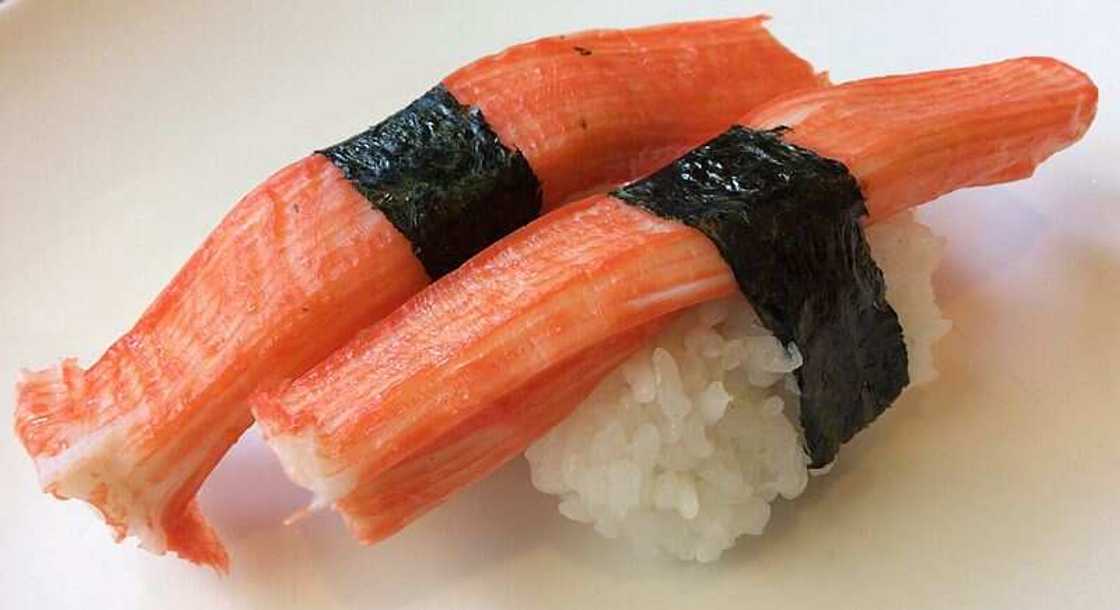
Source: UGC
How is imitation crab made?
The main ingredient, surimi, is made of fish flesh that has been deboned, washed to remove fat and unwanted bits, and minced to a paste.
The paste is then blended with the other ingredients mentioned above and then heated and pressed into different shapes.
The final product is then vacuum sealed and pasteurized to kill potentially harmful bacteria.
Is imitation crab healthy? Its nutritional value explained
A 3-ounce serving of artificial crab contains the following:
- 85 calories
- 1 gram of fat
- 6 grams of carbohydrates
- 25 milligrams of cholesterol
- 841 milligrams of sodium
A 3-ounce serving of cooked, real crab contains:
- 101 calories
- 0g of carbohydrates
- 1g of fat
- 91 milligrams of cholesterol
- 324 milligrams of sodium
Generally, real crab has significantly more nutrients compares to its imitation counterpart. Furthermore, the real deal contains three times the amount of protein than its faux counterpart.
Real crab is also higher in vitamins and minerals like Vitamin B12, Zinc, and Selenium, and it is also higher in omega-3 fatty acids. This is mainly because some nutrients are rinsed away during surimi processing.
Generally, the real deal has more nutritional value than its imitation. Furthermore, the additives and preservatives present in artificial crab make it the less-nutritive option.
However, the two have the same amount of fat, so you should not dismiss imitation crab yet. Just don't consume it too much. Remember the quote by Oscar Wilde: "Everything in moderation, including moderation."
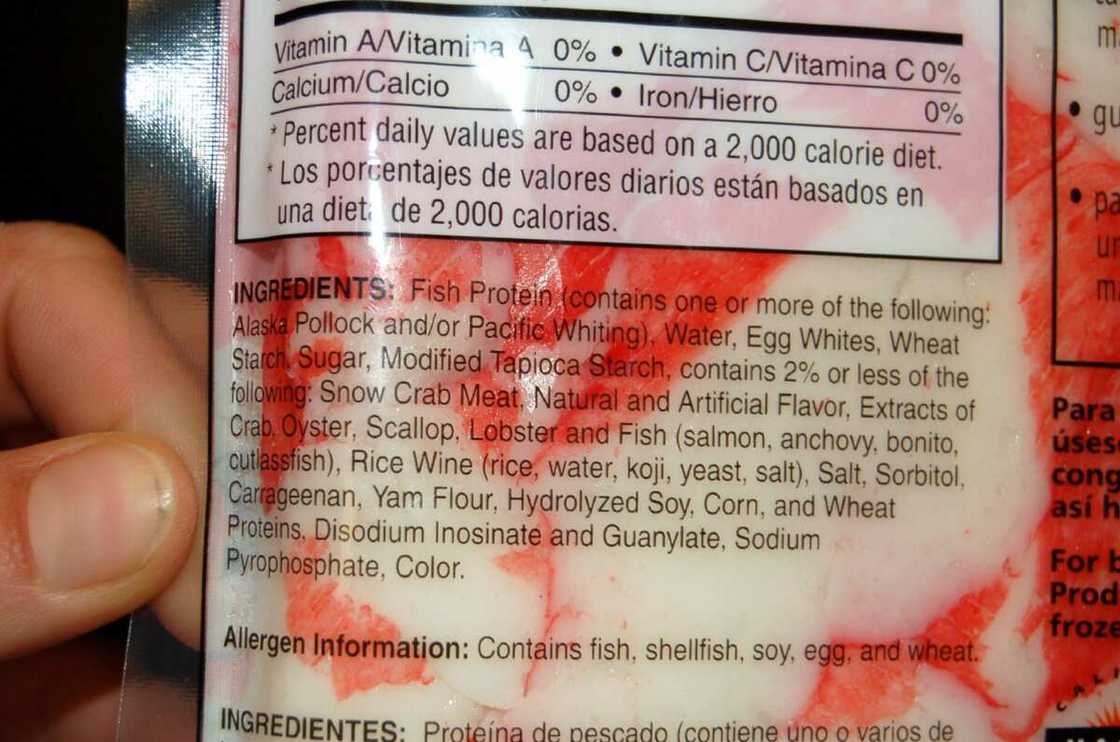
Source: UGC
Advantages of imitation crab
- The product is affordable, as it costs a third of the cost of real crab.
- It is convenient: It can be added to dishes without further preparation.
- Some are gluten-free and made without GMO ingredients.
- Some are packaged in grab and go snack-sized portions.
- Some include more natural ingredients such as pea starch, cane sugar, sea salt, oat fibre, and natural flavours.
- It's simple to use. The product is pre-cooked, so you can use it straight from the package for cold dishes such as salads. It may also be added to heated dishes.
- It is versatile- it comes in flakes, chunks, sticks, and even shreds.
Disadvantages of imitation crab
- It is highly processed
- It may contain addictive ingredients
- It is less nutritional than the real deal.
- Its production process uses excessive amounts of water.
- The seafood used in the product is sometimes mislabeled, which increases food safety and allergy risks.
- The pollock used in surimi is sometimes harvested in ways that can harm other sea life.
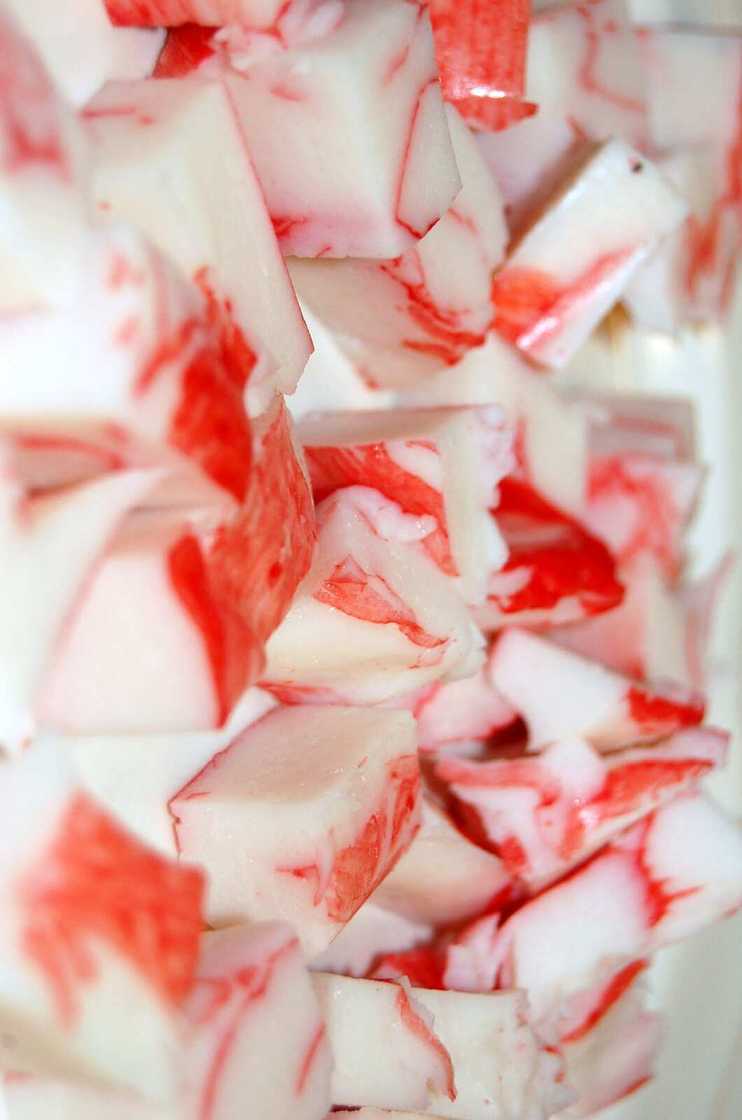
Source: UGC
How to tell real crab from imitation crab
To tell the two apart, you need to look at the products' label. For imitation crab, the labels usually read something like crab sticks/krab/imitation.
Another thing you would like to check is the ingredients. The real deal usually contains crab and water alone (although sometimes citric acid may be added to prevent discolouration). The faux product, on the other hand, contains a long list of ingredients.
Storing imitation crab
The vacuum-sealed product can be kept for two months if it is not opened.
If you buy it frozen, it may stay fresh for six months. If it is opened or thawed out, the product's shelf life is reduced to 3-5 days.
Frequently Asked Questions
To sum it all up, here is all you need to know about the product:
What is imitation crab meat made out of?
It is processed fish meat made from surimi (fish flesh that has been deboned, washed to remove fat and unwanted bits, and then minced to a paste).
What is imitation crab made from?
Apart from surimi, the other ingredients in this product are water ], starch, protein, sugar, sorbitol, vegetable oil, salt, colourings, preservatives, and additives.
Is imitation crab vegan?
No, it is not. The main ingredient in the product is surimi, which is made from Wild Alaska Pollock.
Can you eat imitation crab raw?
Yes, you can, as the product is pre-cooked during the manufacturing process.
Why do sushi restaurants use imitation crab?
The product is used in place of the real deal because it is cheaper.
How bad is imitation crab meat for you?
The product is higher in carbohydrates and lower in proteins, omega-3 fats, minerals and vitamins than the real deal. It also contains additives and preservatives (such as sugar and MSG) that may pose health concerns.
However, according to Dr. Jae Park (a food scientist at OSU), via Thrillist:
...surimi has many health benefits. It's high in omega-3's, which aid in weight loss and help fight inflammation. When the fish is processed into surimi, it does lose the omega-3's naturally found in pollock, but pollock omega-3 oil is added to crabstick before it goes into your sushi. He also says it's a low-fat food, and depending on the brand of surimi seafood you're eating, it could be high in protein.
The bottom line is that imitation crab is a good substitute for the real deal, provided you do not consume it too much. The presence of additives and preservatives in the product also makes it one of the food items you shouldn't consume too much.
Source: Legit.ng


